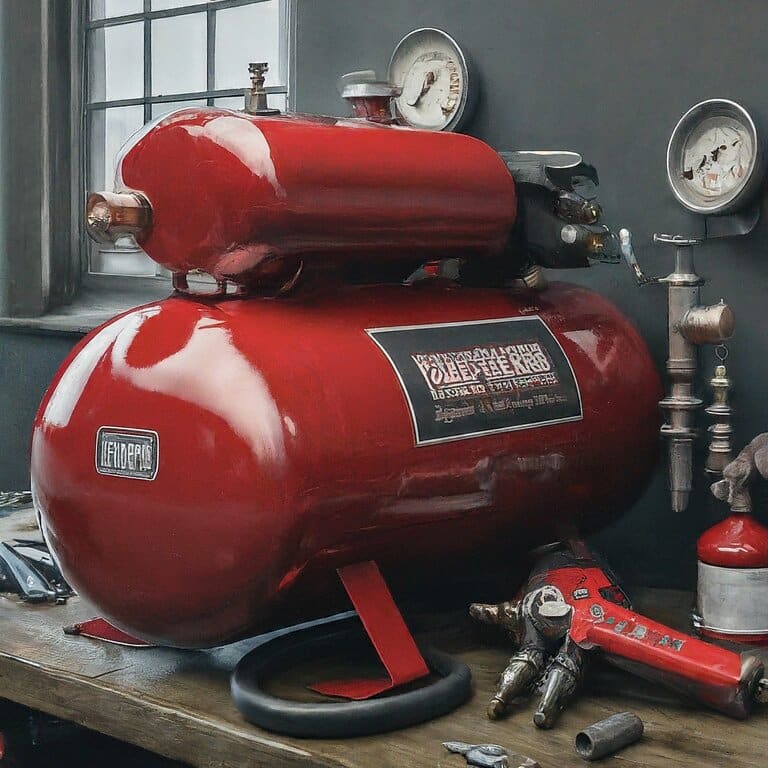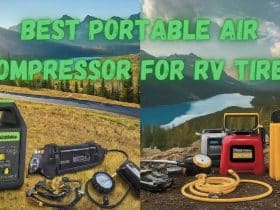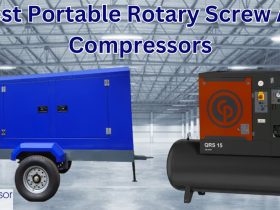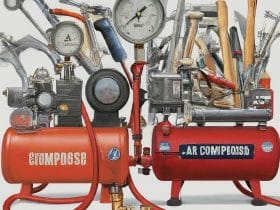CFM is one of the most important factors affecting compressor performance in workshops, garages, and industrial settings. Compressors power many pneumatic tools used for painting, sanding, nailing, and more. While many factors contribute to compressor performance, one of the most important is CFM and if you wanna know that how to increase CFM on Air Compressor stick to this guide.
Table of Contents
What is CFM?
Cubic Feet per Minute is how much air your air compressor can deliver at a specific pressure level (usually PSI – pounds per square inch). With a higher CFM, you can run more air tools or multiple tools at the same time.
Why Increase CFM?
You will encounter several problems if your air compressor cannot keep up with the air demands of your tools:
- Tool Starvation: Air tools that don’t receive enough CFM will run slowly, inefficiently, or may not function at all.
- Frequent Cycling: Your compressor will have to work harder and cycle on and off more frequently, leading to increased wear and potential breakdowns.
- Project Delays: You’ll experience slow work and frustrating delays while waiting for your compressor to catch up.
How to Increase CFM on Air Compressor: Effective Methods
Let’s dive into several ways to get more CFM out of your air compressor:
-
Reduce Pressure
It’s usually possible to adjust the output pressure of most air compressors. It’s a tradeoff between CFM and PSI. If you’re using a variable-speed compressor, you can increase the available CFM by decreasing the output pressure at the regulator. Just make sure that you don’t set the pressure lower than your tools’ minimum pressure requirement.
-
Optimize Air Delivery
Use Larger Hoses: Airflow restriction is the enemy of CFM. Upgrade to hoses with larger diameters to deliver more air from the compressor to your tools.
Choose High-Flow Couplers and Fittings: Opt for high-flow fittings throughout your compressed air system to minimize bottlenecks.
Shorten Air Lines: The longer the path air has to travel, the more pressure and CFM are lost due to friction. Keep your hoses and air lines as short as possible.
Check for Leaks: Even small air leaks add up! Regularly inspect your system for cracks in hoses, loose fittings, or leaks around tools, and make repairs immediately. -
Connect Multiple Compressors
If a single compressor can’t meet your needs, consider connecting two or more compressors in parallel. This will effectively add their CFM together. However, ensure the compressors have compatible pressure ratings for safe and efficient operation.
-
Add an Auxiliary Air Tank
An auxiliary air tank acts as an extra air reserve, helping manage pressure spikes when air demand is high. This is especially useful for tools that consume large bursts of air intermittently, allowing your compressor more time to build back up.
-
Improve Compressor Efficiency
Improving compressor efficiency not only increases CFM output but also reduces energy consumption, resulting in cost savings. By implementing measures such as regular maintenance, proper lubrication, and optimizing airflow, you can enhance the overall performance and lifespan of your compressor. This leads to improved productivity, minimized downtime, and a more reliable air supply for your tools and equipment.
Regular Maintenance: Change air filters regularly, clean intake vents, and follow your compressor’s maintenance schedule to ensure it’s always working optimally.
Cooler Air Intake: Compressors work better when the intake air is cooler. Ensure adequate airflow around your compressor and consider piping the intake to draw air from a cooler location.
Important Considerations
- Compressor Type: Remember that CFM on fixed-speed compressors always remains the same. You can’t artificially increase it without upgrading the compressor.
- Tool Requirements: Always check the CFM requirements of your most demanding air tools and size your compressor setup accordingly.
- Limitations: It’s impossible to drastically increase the CFM output beyond the compressor’s designed capacity without significant, costly modifications.
The Big Upgrade: When All Else Fails
When you’ve tried all the methods above for How to Increase CFM on Air Compressor and you don’t get desired results, you might need to get a new compressor. This means replacing your old compressor with one that’s more powerful. When choosing a new compressor, make sure you take future growth into account, so you don’t have to deal with the same limitations again.
FAQs
My air compressor is maxed out on pressure. Can I still increase CFM?
Answer: If your compressor is a variable-speed model, then yes! Reducing the pressure setting will generally increase the available CFM. However, fixed-speed compressors always output the same CFM, regardless of pressure adjustments. Check your compressor’s specifications to determine its type.
I use multiple air tools at once. Will increasing CFM help?
Answer: Absolutely! A higher CFM allows you to run more tools simultaneously without impacting their performance. Ensure your compressor’s CFM rating is greater than the combined CFM requirements of all the tools you intend to use at the same time.
Can I increase CFM without buying a new compressor?
Answer: Yes, to a certain extent. Optimizing air delivery with larger hoses, high-flow fittings, fixing leaks, and ensuring proper compressor maintenance can all improve CFM delivery. However, these methods have limits, and for drastic CFM increases, a larger compressor might be necessary.
How do I know if I need more CFM?
Answer: Here are a few signs indicating you need more CFM:
1. Your air tools perform slowly or inefficiently.
2. Your compressor cycles on and off too often.
3. You experience delays waiting for your compressor to catch up with your tool’s air demands.
Is it safe to connect multiple compressors to increase CFM?
Answer: Yes, it can be safe if done correctly. Ensure the compressors have compatible pressure ratings (PSI). Seek guidance from a qualified professional if you’re unsure about the process for safety and effectiveness.








Leave a Reply